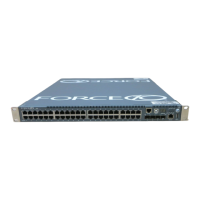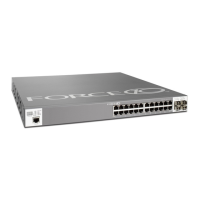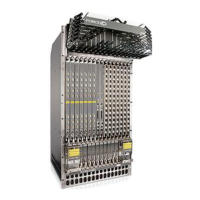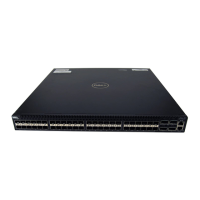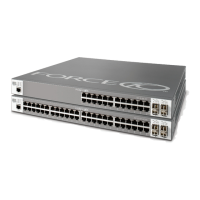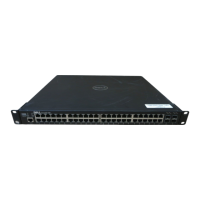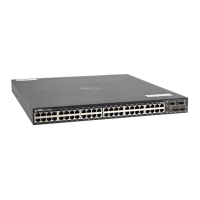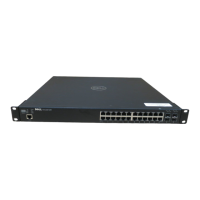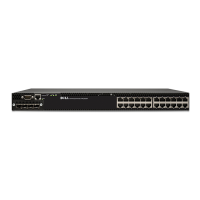770 | Rapid Spanning Tree Protocol (RSTP)
www.dell.com | support.dell.com
• Modify Global Parameters on page 775
• Modify Interface Parameters on page 776
• Configure an EdgePort on page 777
• Preventing Network Disruptions with BPDU Guard on page 883
• Influence RSTP Root Selection on page 778
• Configuring Spanning Trees as Hitless on page 886
• SNMP Traps for Root Elections and Topology Changes on page 779
• Fast Hellos for Link State Detection on page 779
• Flush MAC Addresses after a Topology Change on page 599
Important Points to Remember
• RSTP is disabled by default.
• FTOS supports only one Rapid Spanning Tree (RST) instance.
• All interfaces in VLANs and all enabled interfaces in Layer 2 mode are automatically added to the
RST topology.
• Avoid using the
range command to add a large group of ports to a large group of VLANs; adding a
group of ports to a range of VLANs sends multiple messages to the RSTP task. When using the
range
command, Dell Force10 recommends limiting the range to 5 ports and 40 VLANs.
Configure Interfaces for Layer 2 Mode
All interfaces on all bridges that will participate in Rapid Spanning Tree must be in Layer 2 and enabled.
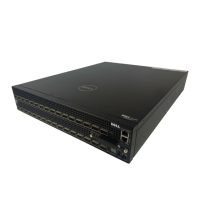
